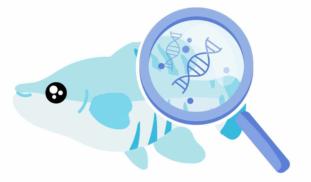Please wait...
About This Project
The development of cultivated seafood requires identifying and isolating specific cell types. Cell sorting with specialized antibodies is pivotal in this process. This entails the design of antibodies tailored to specific cell surface receptors. This pilot project on killifish aims to generate a single-cell multi-omics dataset for analysis, identifying cell types and surface receptors. Cultivated seafood could potentially reduce global fishery/aquaculture carbon emissions by 68%.

Browse Other Projects on Experiment
Related Projects
Engineering carbonation catalysts for scalable carbon removal within our built environment
Concrete, produced at 40 gigatons annually, can naturally soak up CO2 to form a scalable, durable and verifiable...
Designing ultrastable carbonic anhydrase with deep generative models and high-throughput assays
To minimize the impact of CO2 emissions on life on earth, we need technologies for carbon capture exceeding...
How accurate is lyrebird vocal mimicry?
Lyrebirds are some of the world’s best vocal mimics and can accurately copy dozens of species in their Australian...


